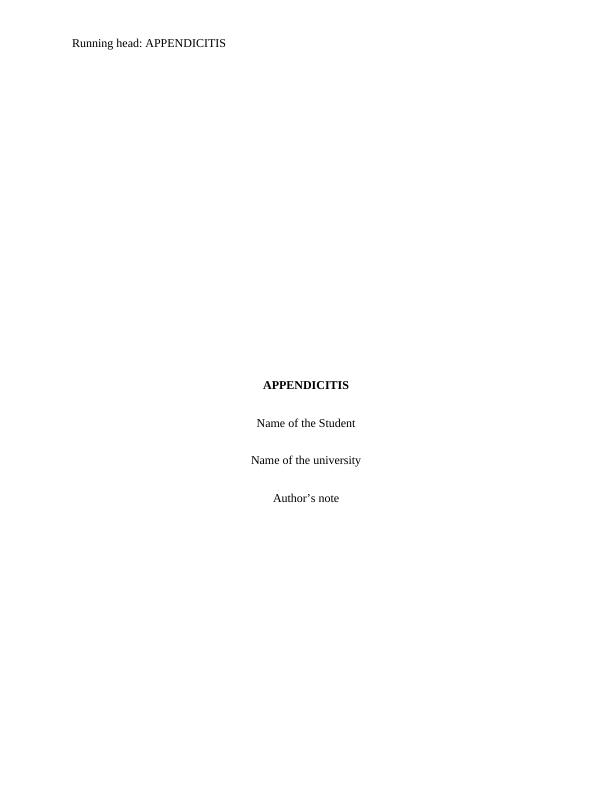(PDF) Clinical Approach in the Diagnosis of Acute Appendicitis
Added on 2021-04-16
9 Pages2652 Words57 Views
End of preview
Want to access all the pages? Upload your documents or become a member.
Pathophysiology of Appendicitis and Developmentally Appropriate Nursing Care
|10
|2842
|68
Case Study on Appendicitis
|8
|2307
|457
Appendicitis and Peritonitis: Nursing Interventions for Child Patient
|10
|2853
|333
Pathophysiology and Nursing Care for a Patient with Appendicitis and Peritonitis
|9
|2715
|490
Nursing Assignment: Pathophysiology Case Study
|7
|2578
|98
Child and Adolescent Nursing: Pathophysiology, Growth and Developmental Theories, Family-Centered Care, and Effects of Hospitalization
|10
|2932
|163



